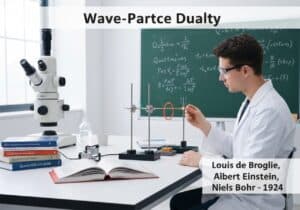分析支持和反对拟议变革的力量。
- 方法: 工程, 质量
力场分析

力场分析
- 变更管理, 持续改进, 流程改进, 项目管理, 质量管理, 风险管理, SWOT 分析, 团队合作
目标
如何使用
- 一种决策工具,包括确定推动力(支持变革的因素)和制约力(反对变革的因素)。通常会给每种力量打分,分析结果有助于制定如何加强推动力和削弱制约力的战略。
优点
- 对影响变革的因素进行清晰直观的总结;帮助理解变革举措的复杂性;促进讨论和建立共识;帮助制定有效管理变革的战略。
缺点
- 在对各种力量进行识别和评分时可能带有主观性;可能会过度简化复杂的情况;不能提供明确的解决方案,只能提供一个分析框架;定性力量的量化过程可能具有挑战性。
类别
- 人力资源, 解决问题, 项目管理
最适合:
- 通过系统地识别和评估支持或阻碍变革的因素,就拟议的变革做出决策。
Force Field Analysis is widely applied across various sectors such as healthcare, education, manufacturing, and software development during the planning and implementation phases of projects that involve change initiatives. This methodology is typically initiated by project managers, change agents, or team leaders who seek to drive significant modifications, like the introduction of new technologies or reforms in organizational policies. It is valuable during the early stages of projects when understanding stakeholder perceptions is essential for success or when conducting impact assessments related to potential changes. Participants in these discussions often include cross-functional teams comprising engineers, designers, business analysts, and end-users, ensuring diverse perspectives are represented. By quantifying driving and restraining forces, teams can visualize the balance of power influencing the change process, which aids in facilitating open dialogue for consensus-building. For example, in an engineering context, Force Field Analysis may be employed during the design phase of a new product to weigh the benefits of cutting-edge materials against potential production challenges, enabling more informed decision-making. Furthermore, it supports strategic planning by allowing organizations to formulate actionable steps to bolster supportive factors while mitigating resistance, thus increasing the likelihood of successful implementation within a structured 变更管理 framework.
该方法的关键步骤
- Clearly define the change initiative or decision to be analyzed.
- Identify and list all driving forces supporting the change.
- Identify and list all restraining forces opposing the change.
- Assign scores to each driving and restraining force according to their impact.
- Create a visual representation of the driving and restraining forces.
- Analyze the balance of forces to understand potential outcomes.
- Develop strategies to strengthen driving forces and mitigate restraining forces.
- Implement the strategies and monitor the effects on driving and restraining forces.
专业提示
- Incorporate stakeholder feedback throughout the Force Field Analysis process to refine the understanding of driving and restraining forces.
- Use a scoring system that quantifies the strength of each force, enabling data-driven discussions about prioritization and strategy development.
- Regularly revisit and update the Force Field Analysis to adapt to changing internal and external factors that may influence the change initiative.
历史背景
1902
1907
1915
1915-11
1918
1920
1922
1902
1904
1913
1915
1916
1919-05-29
1920
1924
(如果日期不详或不相关,例如 "流体力学",则对其显著出现的时间作了四舍五入的估计)。















相关文章
METS 卡路里计算器
元分析
信息映射
心理模型图
可接受的最大推力和拉力
物料需求计划(MRP)